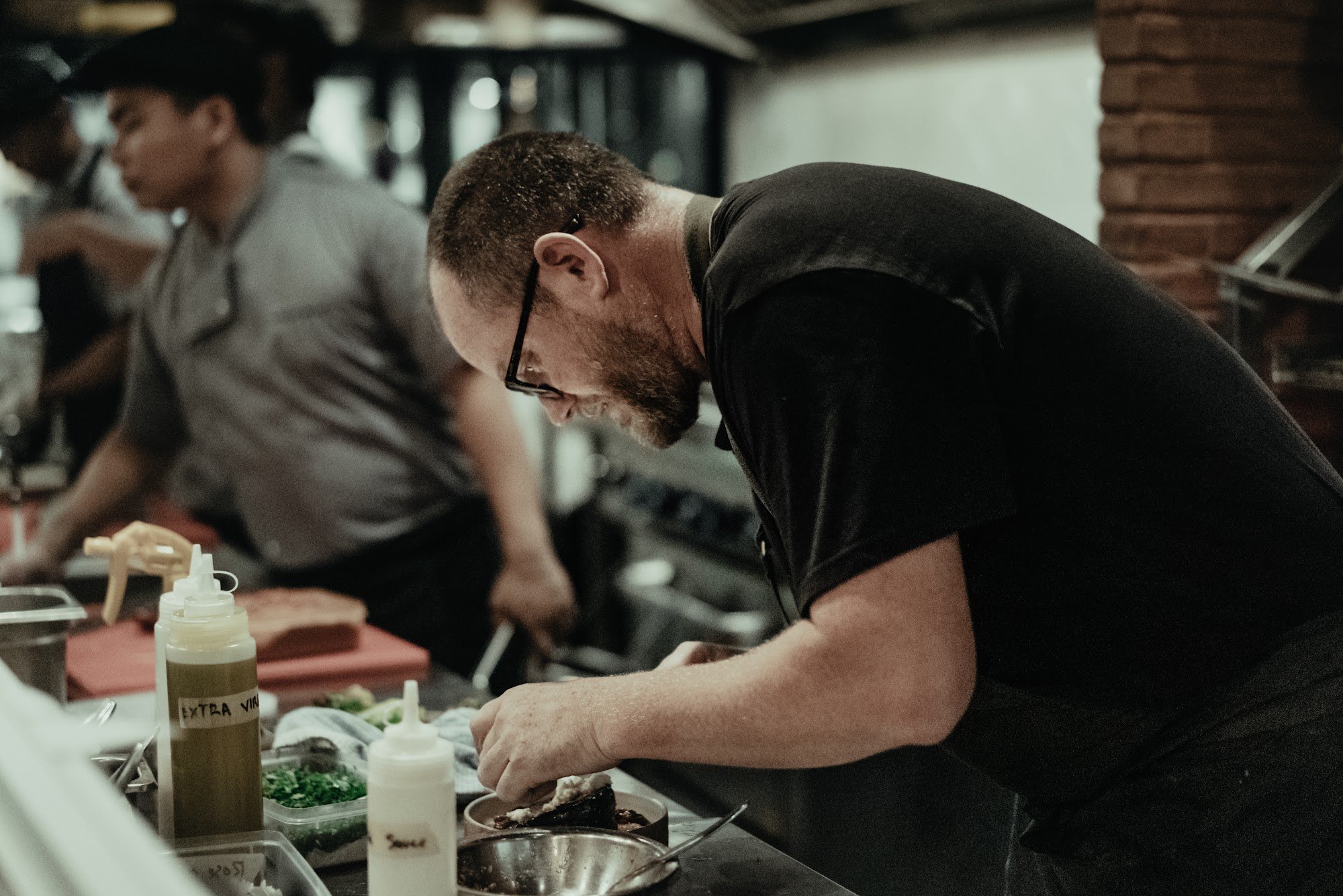The Flavour Master of Bali: Will Meyrick Uncovered
In the world of culinary innovation, few names stand out like Will Meyrick. Renowned for his unique ability to blend traditional Southeast Asian flavors with contemporary flair, Meyrick has carved out a distinct niche in the Bali food scene. As a celebrated chef and restaurateur, his culinary journey has taken him from bustling street markets to the helm of some of the most sought-after dining experiences. In this exclusive interview, we dive into the mind of a true food visionary, exploring his inspirations, challenges, and the passion that drives him to continually redefine the art of cooking.
Your culinary journey has taken you all over the world, from Scotland to Southeast Asia. What initially drew you to the vibrant street food culture of Bali, and how has this influenced your cooking style?
The vibrancy of Bali didn’t initially attract me. It was only after traveling across Indonesia as a whole that I truly fell in love with Indonesian food. Before that, my passion was always street food—from Thailand, Vietnam, Cambodia, and many other places in Southeast Asia. As I explored deeper and uncovered more layers of Indonesia, I realized that it has one of the richest and most diverse food cultures in the region.
Mama San Bali
Mama San has become iconic for its bold interiors and mouth watering Southeast Asian flavors. Can you tell us about the inspiration behind the menu and how you balance traditional authenticity with a modern twist?
Mama San's inspiration has always come from street food. After we opened Sarong, we wanted to create something more low-key and casual, and that’s how Mama San was born. The name itself represents the mother of the house—the caretaker—much like the women who run street food stalls, preserving heritage and tradition while adding their own personal touch. Sarong was our first step into showcasing Southeast Asian flavors in a refined dining setting, but with Mama San, we wanted a space that felt more relaxed. Over time, we upgraded the interior, evolving it into a more polished space while staying true to its roots. Unfortunately, street food has become overly commercialized and is now widely available, taking away the experience of hunting for hidden gems. That’s why, for me, it’s important to give these dishes a modern twist—to adapt and refine them while still honoring their origins. Before, many of these recipes were unknown, passed down quietly through generations. My approach is to reinterpret them in a way that keeps their essence alive while making them relevant to today’s diners.
Billy Ho is known for its laid-back yet refined approach to Asian comfort food. How did you curate a menu that feels both nostalgic and innovative, and what are some must-try dishes for first-time visitors?
For me, Billy Ho's inspiration comes from my experiences in Japan—whether in Tokyo or on ski trips. Japan, especially Tokyo, feels like the pinnacle of Asian cuisine right now. That’s why I make it a point to go back twice a year for research and inspiration. The “Feed Me” menu is great for peoples first visit, it takes your taste buds on a journey of fresh authentic flavors and showcases our most popular dishes.
Honey & Smoke is a unique addition to the Bali dining scene. Can you share how you’ve incorporated the art of grilling and smoking into the menu while maintaining the bold flavors Southeast Asia is known for?
Honey & Smoke is our only fully Western-style restaurant, but it takes inspiration from Middle Eastern flavors, like those found in Turkey. For me, grilling over coals—whether for kebabs, cured meats, or other dishes—is essential because it adds a unique depth of flavor. Every dish on the menu is touched by fire, which brings out bold, smoky profiles. It’s also one of my favorite restaurants.
Buzo pushes the boundaries of contrasting cuisines and flavors. How do you balance the blend of local ingredients with traditional Italian influences in each dish?
For Buzo, it’s not just about using local ingredients—though we do source many locally. We cure our own sausages, prosciutto, and lomo, but the real influence comes from blending Western flavors with other global inspirations, particularly from Japan. For example, we create ramen-style pizzas and Japanese-inspired pasta dishes, incorporating umami-rich flavors while maintaining the integrity of the ingredients. Wherever possible, we highlight exceptional local produce as well.
Hujan Locale is the latest addition to your Bali restaurant portfolio, celebrating regional Indonesian cuisine with locally sourced ingredients. How do you work with local farmers to create an authentic dining experience, and why is this partnership important to your culinary philosophy?
It's important for us to stay connected with local farmers and suppliers—not just for vegetables and fish, but also for homemade ingredients like tauco, soybean products, and fish sauce. Supporting local artisans who create these flavors is just as important as sourcing quality produce and proteins. We also work with pig farmers to support heritage breeds and make an effort to use lesser-known fish that are abundant but often overlooked. Instead of relying only on popular fish, we want to educate people on more sustainable options. For me, regenerative farming matters more than just organic labels. Restoring land and practicing sustainable agriculture help create a better food system for the future.
If there’s one feeling or takeaway you want every guest to leave with after dining at any of your establishments, what would that be?
I think a great restaurant experience isn’t just about one highlight—it should feel complete. Just like a well-balanced dish, where the flavors start with a touch of sourness, build with spice, and finish smoothly, the entire dining experience should flow naturally. When guests leave, I want them to feel that every detail—flavors, ambiance, service, and design—came together seamlessly. It’s not about just one standout moment, but rather the way everything works in harmony to create a truly memorable experience.
You’re often called “The Street Food Chef” for your dedication to authentic street flavors. How do you adapt these humble yet complex dishes for a restaurant setting without losing their essence?
To capture the true flavors of a dish, I believe in being unapologetic—whether it’s spicy, salty, or bold, the flavors should stay true to their origins, just like in the streets. We try not to change too much in our interpretation. I once had an old lady tell me, ‘You can never copy my recipe because every hand is different,’ and she was right. You can take a recipe from one region and recreate it elsewhere, but it will never be exactly the same. The soil, the ingredients, and the environment all influence the taste. It’s not about being better or worse—it’s just naturally different
Your culinary adventures are well-documented on your social media and YouTube channel. How important is storytelling in your approach to food, and how do you use these platforms to connect with your audience?
I think it’s important for people to see the journey behind what we do. A lot of chefs don’t take the time to research, and there’s nothing wrong with that, but for me, it’s essential. Before you dive into a culture, you need to truly understand it—immerse yourself in it, engage with the people, and study its history. Only when you grasp the culture’s background, its traditions, and even its religion can you fully appreciate the food and the influences that shaped it. That’s why documenting traditional culinary practices is so important. Many techniques and recipes have been passed down from generation to generation without ever being written down, and with modernization, some of these traditions risk being lost. Preserving them now ensures they continue to be part of our culinary heritage. I also believe in authenticity. Today, with social media, there’s a lot of focus on creating an illusion—models posing, staged experiences, and restaurants appearing full when they’re not. For me, it’s never about that. It’s about offering a genuine experience, showcasing real cuisine and culture, and letting people engage with it in their own way if they choose to.
Each of your restaurants in Bali are very different to each other, how do you maintain the creative flow and ensure each restaurant retains its unique identity?
It’s important to maintain each restaurant’s unique identity while ensuring everything comes together seamlessly. That’s why I travel and deeply study the cuisine we’re focusing on in each restaurant. Sometimes, a restaurant might naturally evolve in a different direction, but we always make sure it stays true to its concept. Every dish and every menu should represent what the restaurant stands for. What I find interesting is that a dish that doesn’t work in one place might be a hit in another, depending on how it’s presented and finished. Even if the dish originates from somewhere else, it can still feel like a natural fit when done right. Understanding the brand and staying within its guidelines is key. Fortunately, I have an incredible team, including someone who has worked with me for a long time, helping to guide each restaurant’s evolution while keeping everything aligned.
You offer immersive experiences like cooking classes and street food tours. What can guests expect for these experiences?
I've been on the island for 20 years and in Asia for 25, and for me, it’s important to share the depth of what I’ve seen—both in the sea and across Bali. It’s about what drew me to Bali, the Balinese culture, and the richness of Indonesian culture as a whole. This experience is really about seeing Bali through my eyes—not through money or branding. I hope people are interested in experiencing something deeper than the commercial side of Bali. That’s why we try to offer something more meaningful, so when people leave, they take away more than just memories of beach clubs and pool bars. If they’re open to it, they can immerse themselves in the culture I see every day.
What’s next for Will Meyrick? Are there any upcoming projects or new culinary destinations on the horizon that fans should be excited about?
There’s a lot on the horizon—more restaurants, a hotel project in Lombok that I’m working on, and a deeper exploration of different parts of Indonesia. Right now, I’m focused on Lombok, creating restaurants in some incredible locations while trying to stay away from the crowded, overdeveloped areas. Instead of following the market, I’m drawn to more untouched and less-traveled places. I’ve seen what happened in Canggu, and it’s starting to happen in Uluwatu as well. As operators, I think we need to be more mindful of where we go to avoid harming these areas. In some ways, we’re all part of the problem, and I see similar rapid growth happening in other parts of Bali. That’s why I want to focus more on eco-tourism and conservation-driven tourism. It’s important to have a solid plan in place and work with developers who prioritize sustainability. That’s the vision for the future, and I’m really excited about it.






























